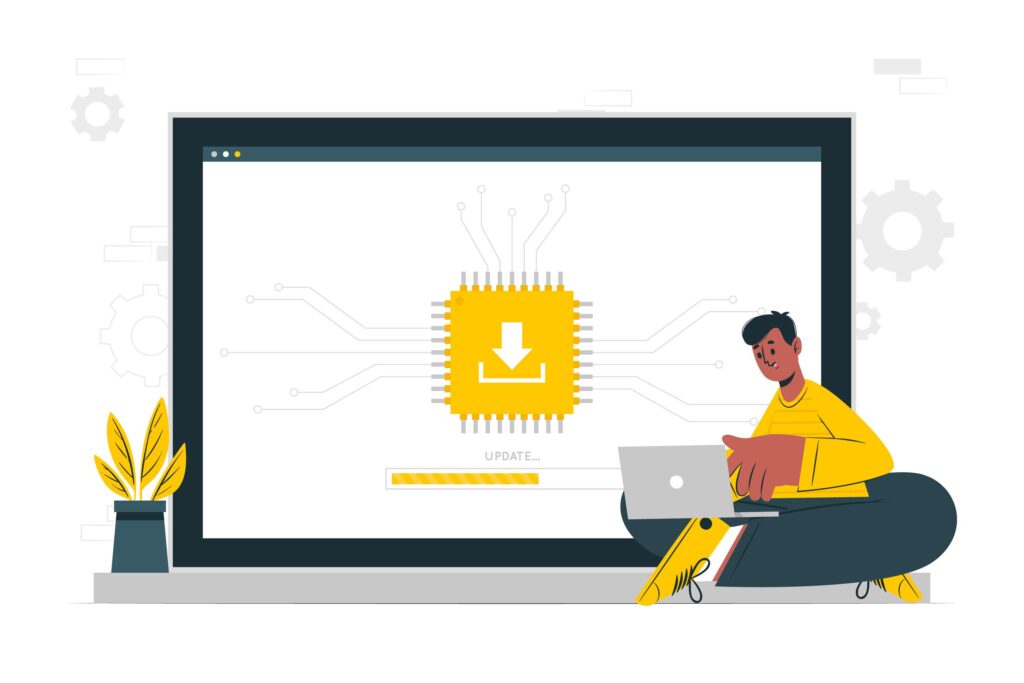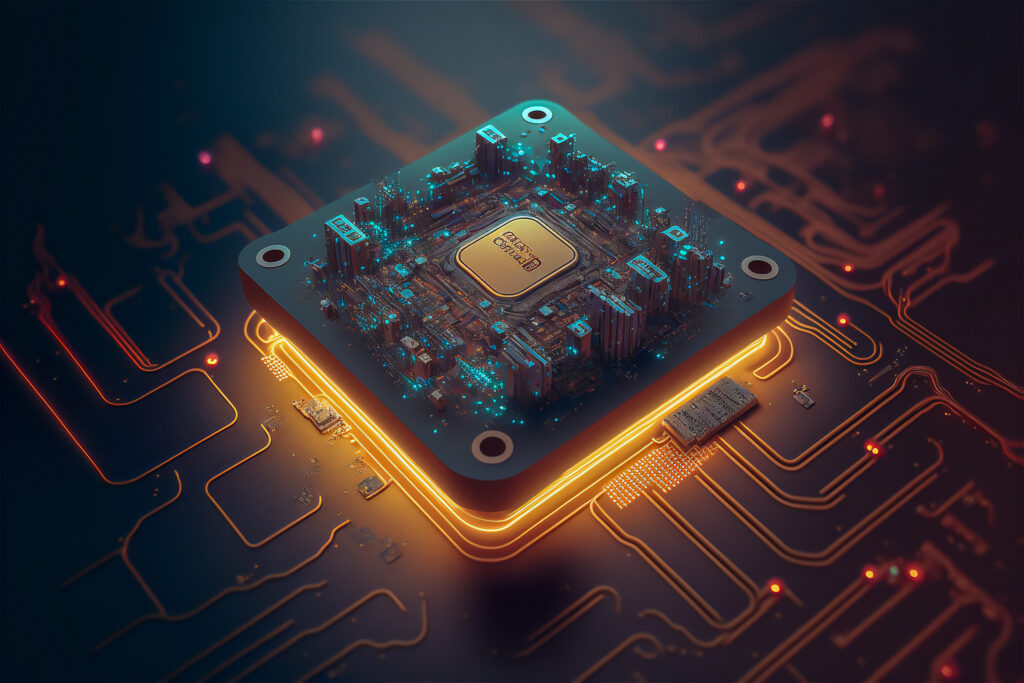Introduction
Take a moment and look around. How many gadgets or appliances do you see? Five? Ten? Maybe fifty, a hundred, or more? From work to household chores, devices have become an indispensable part of our lives. But what do you know about these devices helping us out with our tasks? In this case, the answer is that they rely on two key components: hardware and firmware. For these devices to work smoothly, they require reliable hardware and well-designed firmware to perform their tasks effectively.
While hardware is the basic structure of any device, firmware is its operating brain and secures all the parts working in unison. Modern devices often multitask with multiple programs running at the same time, which can slow down eventually. The first reaction when this happens is typically to swap the old hardware with newer ones. But, the smarter, cost-effective approach is upgrading the firmware.
This world of technology is changing so fast that one must stay updated with whatever one gets. Amongst the lot, firmware updates are often marginalized despite playing a critical role in making your devices function and secure. I guess managing firmware updates should be a priority for both tech geeky heads and casual users. In this all-inclusive post, we shall discuss what firmware updates are, why they’re needed, and how best to handle them.
What is firmware?
Definition and Purpose
Firmware is the software programmed into the devices of hardware. In other words, it acts as the bridge between hardware and software ensuring that the proper working of a device is there. Firmware, unlike the common application software, functions at the lowest level controlling its basic functionalities.
Examples of Firmware
Firmware is installed on various devices:
- Smartphones
- Routers
- Cameras
- Printers
- IoT Devices
All of these rely on firmware for the performance of functions like boot-up, input processing, and the management of all hardware parts.
Why Are Firmware Updates Important?
Firmware ensures that hardware functions smoothly by handling its core operations. Firmware updates contain the most basic program changes in devices to improve their performance, and security through bug fixes, and efficient functioning of the device. It is quite easy to update the firmware of a device. A user simply needs to install an update designed specifically for his device.
The main advantages of updating the firmware to the latest version are as follows:
- Improved Functionality without Hardware Upgrade: Firmware updates give your device more advanced operational instructions, which enhances performance without having to change any hardware.
- New Features: Most updates introduce new features and functionalities, which improve the user experience and enable you to get more out of your device.
- The speed and intelligence in operations: This update can make your device fast, with the following operations: out-of-order execution, instruction processing, branch prediction, and speculative execution.
- Security: With the increasing issues of cybersecurity today, this is a major concern in the digital world. Firmware updates usually include security patches for identified vulnerabilities. Your devices are then saved from potential exploits and unauthorized access.
- Performance Upgrades: Firmware updates optimize how the hardware and software in your device work together, leading to faster processing, better battery life, and an overall more responsive device.
- Bug Fixes: No program is flawless. Firmware updates most of the time focus on fixing bugs and glitches found by users. These fixes could result in a more enjoyable user experience.
- Fixing software-related issues: with time, the software upgrades may introduce a glitch or compatibility issue. Firmware update solves these issues with service fixes and restore their optimal functionality.
- Future-proof devices: Regular updates add new capabilities and functionalities, helping to prevent your devices from becoming outdated.

How to Manage Firmware Updates
- Checking for Updates
Almost all new hardware has firmware-update checking features that are embedded inside the product. Here are the general steps of how to proceed:
- Smartphone: Under the Settings app go to About Phone > System Update
- Router: Get to the webpage of your router and browse there for firmware updating.
- Smart device: Open its accompanying application.
- Automatic vs. Manual Updates
- Automatic Updates: Many devices have an option to download and install firmware updates automatically. This ensures your device stays up-to-date without requiring you to do anything.
- Manual Updates: Sometimes, you may want to update your firmware manually. For example, if you want to review the update details or wait until you are ready to install it.
- Backup Before Upgrading
It is always advisable to back up data before upgrading the firmware. Most updates will not cause problems, but that small chance of losing data or the device becoming faulty is there.
- Follow the Instructions
- Firmware upgrades have instructions for you to follow. Be sure to do so as not to create potential problems. Interrupting an update, like turning off the device, may brick the device (render it unusable).
As we look forward, several transformative trends are redefining the realm of firmware updates, shaping a more dynamic and secure digital ecosystem:
- Expansion of Universal OTA Updates
From being confined to only smartphones and computers, OTA updates are now common for the entire spectrum of IoT products, including smart home appliances wearables, and even vehicles. This way, nearly all devices connected can keep themselves up to date with minimum intervention from users.
- Enhanced Security Protocols
With increasingly complex cybersecurity threats, firmware updates are now one of the mainstays in defending against attacks. Developers update vulnerabilities, improve the defenses against malware, and integrate advanced security protocols to protect against breaches.
- Adapting to Edge Computing
It has also made changes in how firmware updates are delivered. They have now been optimized for devices located at the edge of the network to be processed locally by the device, reducing latency and making possible real-time implementation, necessary for applications like autonomous vehicles and industrial automation.

- Adoption of CI/CD Pipelines
CI/CD pipelines facilitate faster development, exhaustive testing, and auto-deployment to have seamless firmware updates with high-quality delivery and low turnaround time, meaning fast, reliable, and secure firmware upgrades.
- AI-Driven Personalization
Artificial intelligence plays a very crucial role in firmware updates because devices can now analyze user behavior and updates are being customized based on individual preferences and usage patterns. This makes for a more personalized and efficient user experience.
- Blockchain-Based Update Verification
To reduce the concerns regarding authenticity, blockchain technology is incorporated in firmware updates. Immutable records ensure that the update is valid and secure for users with confidence and transparency.
- Remote Diagnostics and Self-Maintenance
Firmware updates now contain remote diagnostic capabilities that allow devices to identify problems and request updates or repairs. This helps reduce downtime and lower maintenance costs.
- Move to Predictive Maintenance
Firmware updates are shifting from being reactive fixes to proactive solutions. Devices use predictive analytics to predict when maintenance is required and automatically request updates before failure, hence improving reliability and performance.
- Ethics and Data Privacy Focus
In an increasingly interconnected world, firmware updates are designed with a focus on ethical considerations, especially data privacy and user consent. Updates now align with evolving regulations to ensure transparency and protect user data.
- Sustainability-Driven Updates
In a recent trend, sustainability is gaining prominence in the firmware. Hardware is designed durable, and these updates are now primarily for performance optimization and thus prolonging life. This further reduces electronic waste and supports sustainability.
These emerging trends highlight the evolving role of firmware updates, which are no longer just about functionality but are also pivotal in ensuring security, personalization, efficiency, and sustainability in the digital age.
Conclusion
An essential requirement for updating and enhancing your devices would be firmware updates. They bring in necessary security patches performance improvements and sometimes new features. Keeping track of the latest firmware upgrades ensures your devices are protected, optimized, and current. Make sure to routinely check for any updates while also securing a backup of your information and adhering to how the systems were intended to operate.
Vendors, are you interested in learning more? Check out additional blogs and case studies on Nanogenius Technology’s website.

